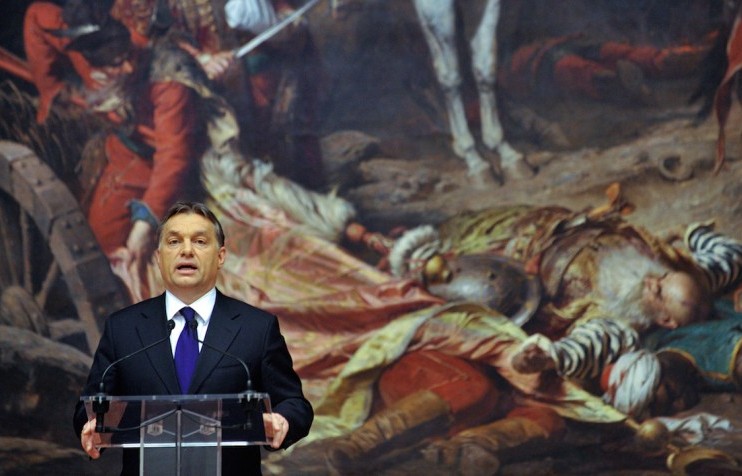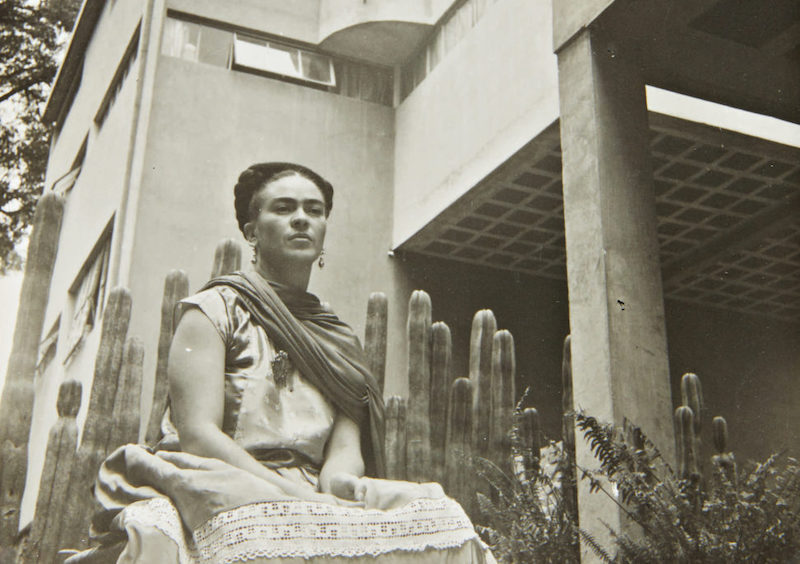Letter from Hungary: how the government’s cultural control is stifling Budapest’s creative spirit
Viktor Orbán’s government has rigged the media and brought major cultural institutions to heel. What next for Budapest’s independent artists and outlets?
In March this year, British rapper Gaika performed to a packed audience at the converted power generator Trafó, in Budapest’s 9th district. The songs, from his politically-charged debut album Basic Volume, explicitly addressed the identity and vulnerably of immigrants. He might not have been a surprising booking for the young, outward-looking organisers of Trafó, but for a contemporary arts space receiving funding from the country’s Fidesz government, hosting a performance with such an explicitly pro-migrant message could have raised eyebrows.
“If Gaika had been speaking his lyrics rather than singing them, if he’d been performing in Hungarian instead of English, then it would have aroused the attention of the authorities,” András Molnár, an events organisers at Trafó, says. “But although it’s subtle, like this you can slip messages to your audience.” With an events list ranging from queer acts to pro-migration dance performances, Trafó is an unusual example of a cultural space with government money that remains largely free from state censorship. After a failed attempt to install a pro-government director at the venue in 2012, the team behind Trafó have mostly been left to their own devices, Molnár says: “Trafó seemed to slip through the cracks.”
In the year since the far-right Viktor Orbán won his third consecutive term as Hungary’s prime minister, running on an aggressively anti-immigration platform, the government has ramped up its assault on what remains of independent civil society. Attacking free media, targeting educational institutions, and presiding over widespread corruption, the Orbán government has sought to expand its control over society, leaving as little room as possible for an alternative vision to its nativist agenda.
Budapest’s National Gallery. Image: Андрей Бобровский under a CC licence
The cultural sphere has not escaped the onslaught, with major institutions, including the State Opera House and National Museum, now banned from communicating with journalists and the public through press conferences, statements, or interviews without first securing approval from the government. Last year, eyes were on the Opera House after pro-government media accused its production of Billy Elliot of “promoting homosexuality”, causing the house to cancel 15 of 44 performances. Less than two months later, a popular exhibition of Frida Kahlo’s work at the Hungarian National Gallery in Budapest was accused of “promoting communism” by a pro-government newspaper.
Orbán’s will to “embed the political system in a cultural era”, as he professed last July, is writ large across the many scandals that have engulfed Hungary’s cultural figures and institutions in the last year. The strangulation of cultural expression is purposeful government policy, but it is also a marker of a deep generational divide between the mentalities of the cohort of Orbán-era politicians and that of a generation of young adults who have grown up in the post-communist era.
The strangulation of cultural expression is purposeful government policy, but it is also a marker of a deep generational divide
The failure of the government to understand and recognise the desire for a culture and social life separate from the state has meant that independently organised events, from club nights to breakfast bars, are treated with suspicion — and, often, ultimately shut down. The effect has not only been alienation and disaffection amongst young people, but the more serious and longer-term issue of a brain drain. Prominent amongst the complaints of Budapest’s small creative class is that of ever-shrinking peer groups, with the last decade seeing an increasing number of friends and colleagues relocate to Berlin, Amsterdam, or elsewhere where there’s more freedom to work in contemporary culture.
In 2009, Budapest’s Ludwig Museum, in large part financed by the government, staged the first comprehensive exhibition in Hungary featuring art from Eastern Europe exploring the role of gender and the expression of sexuality in the post-Soviet space. Ten years on, such an exhibition would be almost unthinkable at a major arts institution, which have become mouthpieces for the promotion of conservative, nationalist values. Fidesz has ensured that the directors of such institutions are loyal to their agenda, with art projects critical of the government or the values they espouse standing no chance of receiving state money.
Distort the Rules, a queer photography exhibition at FERi earlier this year. Image: FERi/Facebook
“When [the government] first started making moves towards art institutions, its first step was purely bureaucratic,” says Kata Oltai, a former curator at the Ludwig Museum who now owns a small feminist gallery, FERi. “They cut budgets and made it clear that our place of work was only the office in the museum. We were no longer allowed to leave the museum to make studio visits or trips to the library.” During an interview last year on the state-run media channel Perfidy, Oltai was cut off when her interviewers saw her t-shirt emblazoned with the words “Legally gay”. “He told me I was making a political act and had to cover my t-shirt,” Oltai says. When she refused to comply, he stopped filming and called his editor.
The dubious and expensive Liget Budapest project (the initiative will cost a reported €70m) headed by former minister and curator László Baán, now director of several of Budapest’s top art institutions including the National Gallery of Budapest, the Museum of Applied Arts, and the Hopp Ferenc Museum of East Asian Arts, remains a potent example of how Fidesz-friendly museum directors can wave through wildly expensive and, according to critics, unnecessary projects. Baán’s grand plans will see the Budapest City Park flattened to make way for a sprawling museum quarter which will include a new home for the National Gallery, currently housed in the impressive Neo-Gothic Buda Castle. Critics say Orban’s enthusiasm for this particular project is inspired less by his desire for Hungary to “reclaim its past greatness and glory in the cultural sphere”, as he put it in May, and more by his determination to move his prime minister’s office to the castle — which would necessitate a new home for the National Gallery.
The restrictions of this cultural climate make the need for independent community spaces all the more urgent. A major issue facing those in Budapest’s creative population who don’t want to associate themselves with the state is access to finance and space. Finding appropriate property to rent for cultural projects and nightlife venues, as well as funding, isn’t easy: Oltai’s gallery space in the 8th district doesn’t rely on state funding, instead using the money raised through her other business — a vintage clothes shop — to support exhibition costs and rent. Other community-led hubs have built themselves around alternative funding structures, but it’s a precarious existence.
The courtyard at Auróra community house. Image: Auróra/Facebook
Auróra, a popular community space in the 8th district which houses a concert venue, office space, and cafe, finances itself through renting desks and offices to NGOs as well as reinvesting the money made on the bar back into the organisation to cover the costs of staff wages and rent. But Aurora’s oppositional bent, with over 100 NGOs using it as a base to work on issues from LGBTQ rights to urban segregation and the marginalisation of migrants, has put the space in the crosshairs of the authorities. Legislation introduced in the 8th district in 2017 prohibits bars from staying open after 10pm, a death knell for organisations whose main stream of income comes from selling drinks at nightlife events.
“They’ve tried to shut us down several times before,” says Zsuzsa Mekler, a coordinator at Auróra. “Local government often comes for inspection, including the National Health Organisation. People from the police and municipal government, who’ve recently come three times to check we’re not opening the bar after 10pm. Other cultural spaces don’t have so many inspections. It’s not normal.”
“Orban’s government is turning away the people who will one day be the soil this nation will grow out of”
As it has in cultural administration, bureaucracy has proved an effective tool in managing the character of Budapest nightlife. With each of Budapest’s 23 districts run by local mayors, separate rules and legislations apply across the city, making it hard for cultural impresarios to keep up. It was just weeks before entrepreneur Gábor Manek planned to open a new nightlife venue-cum-cultural centre in the 8th district that the 10pm curfew was introduced by the district’s then-mayor, Máté Kocsis. The unexpected legislation cost Manek and his investors nearly $557,000 — significant investment had already been made into a serious renovation project for the space. “We’d submitted all the correct documentation and at that point they changed the law,” he says. “It’s hard enough to get all the permits necessary to open a venue here, but in the last few years the ability for low-level bureaucrats to make low-level decisions is harder. These decisions now need to be made from up high.”
Manek puts the decision less down to an overt political intention than “the fear the local government has of losing control”. Wherever it originates, the effect is stifling. Without a reversal of some of the unpredictable red tape and a rethinking of local political procedure, Hungary will continue to lose its motivated, well-educated young adults to emigration: the very people who would one day be most capable of making a positive change in the country.
“Orban’s government is turning away the people who will be the soil this nation will grow out of,” Manek says. “The first step needs to be people in government understanding the need for contemporary cultural places to begin with, places where young people can congregate. After that, I guess we’ll see.”
Text: Nadia Beard
Top image: Naval S under a CC licence


